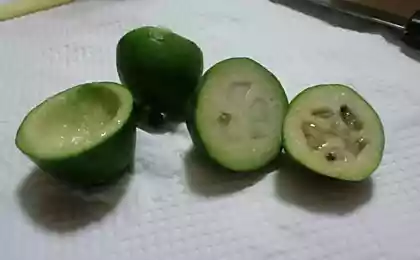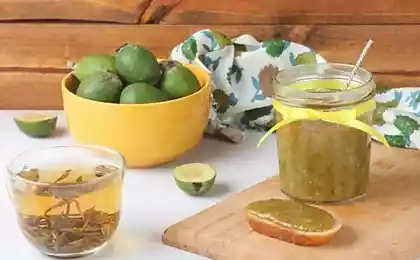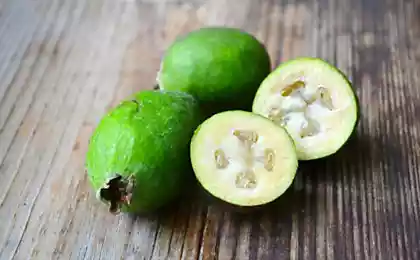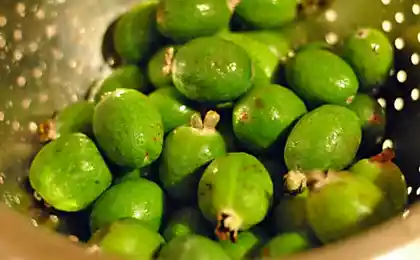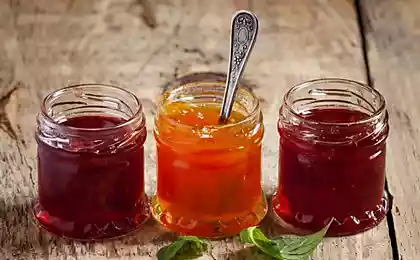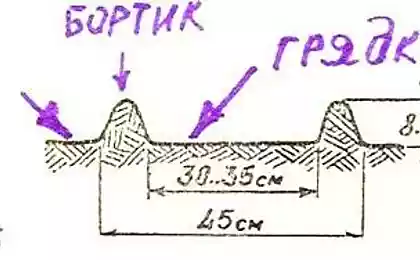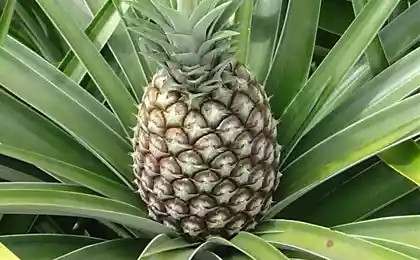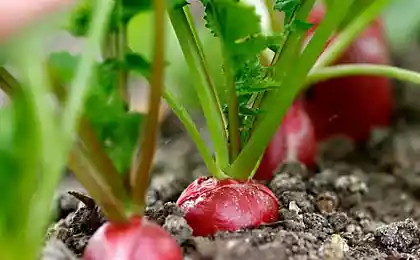512
Growing feijoas at home
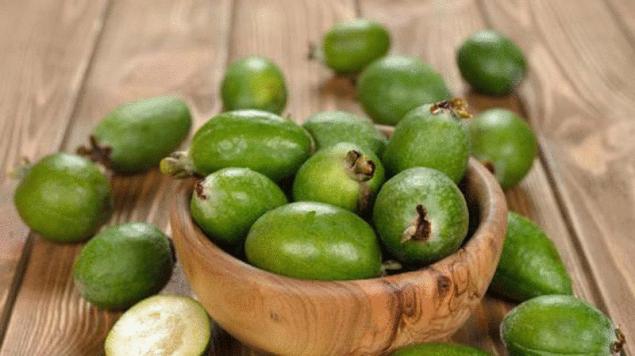
Pineapple guava, a plant that grows naturally in the subtropical climate. To adapt to indoor conditions was done a lot of work, because in natural conditions the plant needs high humidity. Luckily, the breeders managed to get varieties that grow successfully and produce fruit on our window sills.
Feijoa Botanical description
This plant belongs to the Myrtle family, and in nature is a spreading shrub or small tree, height 3-5 meters. The bark on Mature branches light brown, slightly rough. The leaves are opposite, hard, glossy top, bottom pubescent, light green with a silvery bloom.
The flowers can be either single or collected in inflorescence size 3cm. in diameter, very beautiful – a bundle of bright stamens, framed by nearby bright petals. Flowering is only possible on the branches of the current increment. Berries feijoa oblong, slightly lumpy, green taste is very specific, but extremely useful.
Feijoa, useful properties and contraindications
What are the benefits and harms of feijoa? Feijoa is useful due to its rich composition. The fruit of the plant contains large amounts of iodine, and in such a way that this element is easily absorbed by the human body. Also, the fruits of this plant are very rich in vitamin C, sucrose, cellulose, malic acid, pectin. It is also worth noting that fruits rich in substances contributing to the prevention and treatment of cancer.
Getting seed. Very useful in this respect are the rind of the fruit, but it has a tart and slightly astringent taste, and most of all its clean when eaten.
It is best to use the fruit crushed with sugar, along with the peel.
As you know any fruit carries not only benefits but also harm, the same statement applies to feijoas, but the benefits more than harm.
Feijoas should not be used when individually intolerance of components of fruits, as well due to the easily digestible sugars, the fruits of this plant should not be used for people suffering from obesity and diabetes.
Growing feijoa Requirements for soil
This plant has no special requirements for soil, it grows well in fertile, neutral soils. Feijoa difficult to tolerate calcareous soils, and eventually in such a soil the plant dies. Ideal for seedlings seeds can be considered as a mixture composed of leaf – 2 parts peat – 2 parts river sand and 1 part. For growing plants you need to make some other substrate: loam – 6 parts leaf mold is 4 pieces, rotted manure and river sand, one part.
Temperature and lighting
The ideal temperature for growing feijoas is 18-20 °C in winter, reduce the temperature to 12-14 °C. In natural conditions, the plant can tolerate temperatures down to -10°C. Lighting also plays an important role in the development and growth of plants in low light may lose leaves and sahariana feijoa. In winter the plant needs supplementary lighting with fluorescent lamps.
Humidity
Feijoa requires high humidity, and regular soil moisture. Otherwise, your plants will fall the leaves will start to dry out the branches and the roots, long-term drying clod of earth, the plant may die. If the room where the plant is low humidity, it is recommended to perform spraying with warm water and place around the plant containers with water.
Feeding
If you want your plant grew well, bloomed and please you with the fruits, you should ensure regular feeding. Such feeding is best done in spring and summer 2 times a month. It is best to use a combination of mineral and organic fertilizers. The best fertilizer for pineapple guava is considered horse manure, superphosphate and ash or bottom ash extractor.
Horse manure is simply diluted with water in proportion 1 to 10. Fertilizer of superphosphate need to prepare the following: 1 teaspoon of fertilizer should be boiled in 1 liter of water, the solution cool and dilute with clean water 1: 1. This procedure is necessary because superphosphate is very poorly soluble in water. Ash extractor is being prepared just need to take a tablespoon of wood ash, dilute a liter of water and insist 7 days. After that, this solution to water the plants.
Before feeding don't forget to water the plant.
Growing feijoas from seed the easiest way to get this plant on your windowsill is of course to buy it in the store. But not always, feijoas can be found in our flower shops, the second most affordable way to get the plant to grow from seed. This method is called the most simple and affordable method of propagation of feijoa.
To extract the seeds should take ripe fruits, not green and not overripe, namely ripe. To extract the seeds is to cut part of the fruit from the stem and just squeeze out the contents of the fruit into a clean container. After that, pour the seeds with water, but better a weak solution of potassium permanganate and leave it that way for some time, in order that the seeds separated from the pulp. After the pulp away from the seeds, they need a good rinse and spread out on clean paper to dry. When the seeds are dry they can be sown in the ground.
Sowing
For sowing seeds you need to take a soil mix as specified in section Requirements to the soil, or simply to prepare a loose, permeable substratum. Containers for sprouting seeds should not be deep, as the depth of seeding should not exceed 0.5 cm After the seeds are sown, close the top layer of soil and pour from the bottle. Then for best germination you need to make a hotbed, it's enough to put a container of seeds in a plastic bag and tie it. The first seedlings will appear in about a month.
Young seedlings can be transplanted into individual pots after the appearance of 2-3 pairs of leaves. When transplanting you need to pinch off a part of the root web, it will promote a stronger root system.
In this reproduction of part of the properties of the parent plant can be lost.
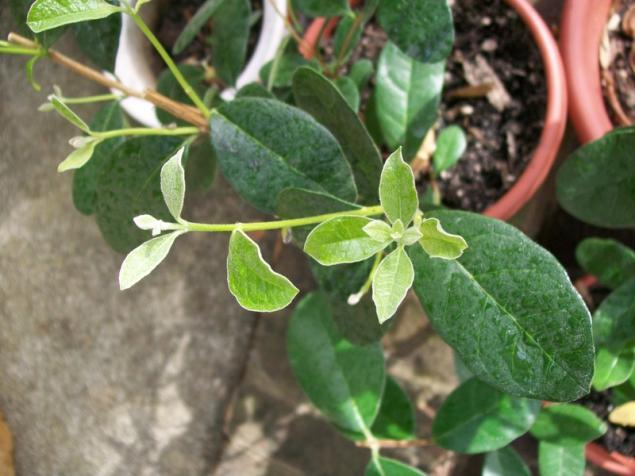
Propagation by cuttings
This method of reproduction allows to preserve all the qualities of the mother plant, but it is more complex and is rarely used by beginners.
For propagation by cuttings need to select semilignified shoots from the crown of the adult plant. And cut them from cuttings 8-10cm. The cuttings should be left on the pair of the upper leaves, and delete the rest. The substrate for germination of cuttings you can take the same as for germination of seeds, or fit more on a simple part leaf mold, take a piece of sand.
Cuttings are placed in moist substrate at an angle, leaving on the surface of the 1/3 part of the stem. After cuttings are placed in soil it would be good to water them with a weak solution of potassium permanganate, and after some time for best survival in any root stimulator. Over watered cuttings need, as well as seeds to make a hothouse. Rooting takes a little more time than the germination of seeds, and a half – two months. It is worth remembering that the cuttings should be periodically aired, and after airing to spray warm water.
After the cuttings will appear with the young leaves it is safe to say that your cuttings have rooted and can be transplanted to a permanent place in individual pots.
The formation of the crown
This plant is in terms of the sill in need of crown formation, and the best form of crown there will be the formation of a standard tree.
Pollination
For best fruiting, and to avoid the barren flowers are best to grow indoors self-pollinated varieties. In the absence of such, need to grow at least two plants and pollination in this case, it is necessary to produce a soft brush, gently transferring the pollen from one tree to another. published
Source: www.art-pen.ru/
